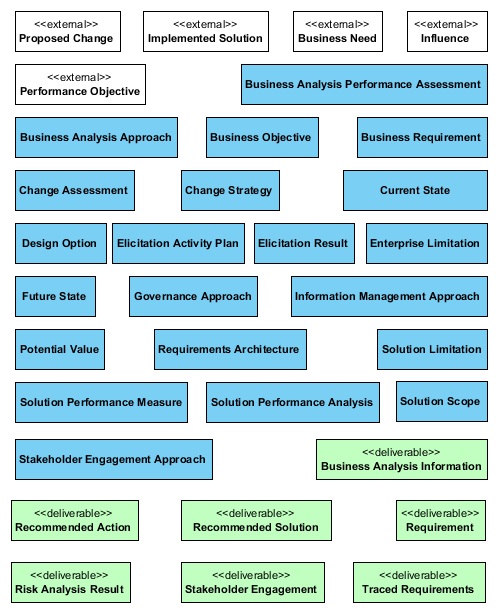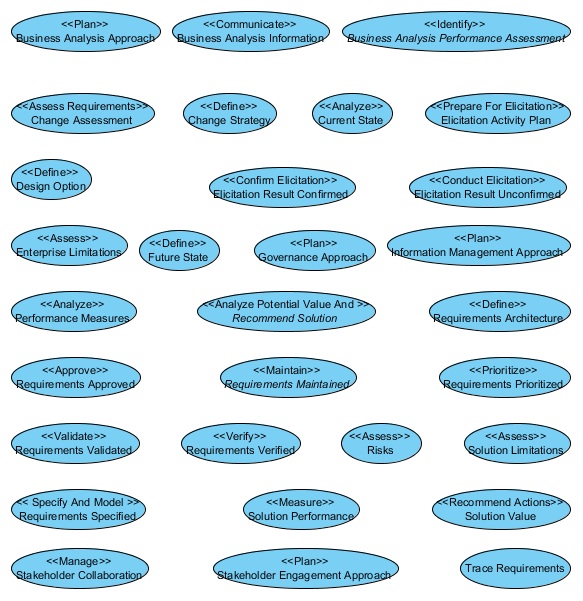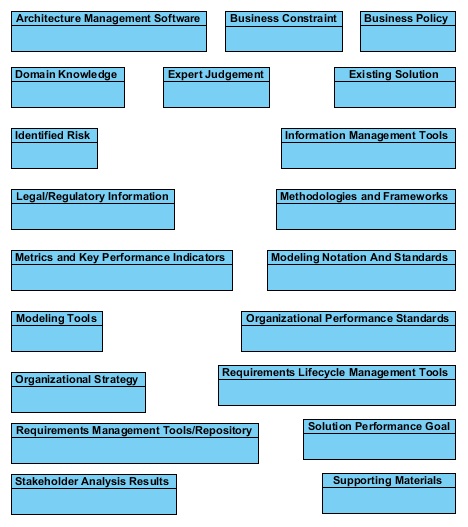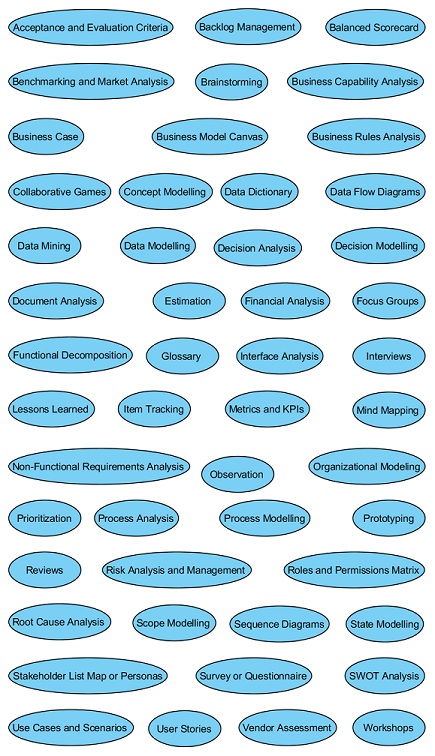Exerpts from Analysis of the BABOK
This page has been superseded by a complete description of the model, which is located at lmunday.org
This page contains diagrams showing useful BABOK information. The diagrams are generated from an analysis model of the Business Analysis Body Of Lnowledge, version 3. A description of this model can be downloaded here.
 |
The model overview diagram shows all of the artifacts in the BABK. Artifacts are a consolidation of all inputs and ouputs of BABOK tasks. Those shaded white are external inputs and therefore not produced by the business analyst. Artifacts shaded green are outpust from the business analysis process. They are delivered to external stakeholders, (and they may also be inputs to business analysis tasks). |
 |
The tasks diagram shows all tasks contained in the BABOK. Tasks are the primary elements of the BABOK. Artifacts, Guidelines and Tools and Techniques are all descrobed in terms of the tasks that use them. Tasks are ordered by the primary artifact they produce. TThe action is added to the task name as a stereotype. |
 |
This diagram contains a summary of guidelines and tools that are not artifacts. Guidelines and tools are shown as inputs to BABOK tasks. They provide information about how to perform the task, or they assist with producing the outputs from that task. Artifacts may also be guidelines. |
 |
The techniques diagram shows all of the techniques contained in the BABOK. Techniques are guidelines that provide additional methods for producing the output artifacts. A technique contains instructions for producing one or more artifact elements. Not all techniques are necessarily applicable to production of an artifact. The business analyst may choose which to apply in their particular situation. |



